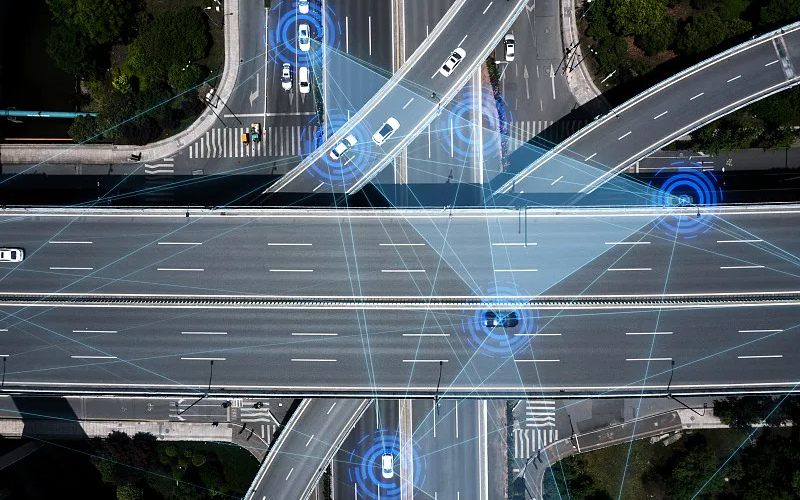The Traffic Sensor Revolution: Smart Technologies Transforming Road Safety and Traffic Management

The Evolution of Traffic Monitoring: Beyond Traditional Solutions
Traffic sensors have emerged as the nervous system of modern urban infrastructure. Unlike legacy systems, today’s sensors leverage AI, edge computing, and high-resolution radar to enable real-time decision-making—reducing accidents, easing congestion, and saving lives. With cities globally adopting “Vision Zero” initiatives to eliminate traffic fatalities, intelligent sensor deployments are proving critical. In the U.S., AI-powered cameras at intersections increased compliance with stop signs from 3% to 94% in Long Island communities, demonstrating their transformative impact.
Core Applications: Where Traffic Sensors Drive Change
1. Enforcing Traffic Rule Compliance
-
AI Camera Systems: Companies like Stop for Kids deploy cameras that detect violations (e.g., running red lights or failing to yield) using virtual vehicle tracking. Videos are deleted if no violation occurs; if detected, automated tickets are issued. This reduced phone-use violations to 0.31% and seatbelt breaches to 0.38% in Devon and Cornwall, UK.
-
Behavioral Deterrence: The psychological “observer effect” kicks in—knowing sensors monitor intersections compels drivers to obey rules.
2. Dynamic Traffic Flow Optimization
-
Adaptive Signal Control: Systems like MAXBAND’s hybrid algorithm synchronize traffic lights using heuristic optimization (combining taboo and variable-neighborhood searches). This maximizes “green bandwidth”—allowing vehicles to pass multiple signals without stopping—reducing delays by up to 40%.
-
Radar-Based Surveillance: Seoul-based bitsensing’s TIMOS radar sensor (powered by NVIDIA Jetson) tracks speed violations, wrong-way driving, and queue lengths across 8 lanes in real time. Installed globally, it enables predictive traffic light management for smarter cities.
3. Pedestrian & Incident Protection
-
Crosswalk Safety: AI cameras with thermal imaging detect pedestrians in low light, triggering alerts when vehicles fail to stop.
-
Accident Prevention: Sensors identify erratic driving (e.g., sudden swerving) and alert nearby vehicles or traffic centers.
Cutting-Edge Technologies Powering Modern Sensors
-
Computer Vision & Deep Learning: Frameworks like TensorFlow paired with SSD (Single Shot MultiBox Detector) models enable real-time vehicle/license plate recognition. Systems analyze speed by calculating movement between video frames.
-
Edge AI Processing: Devices like Obvio.ai’s solar-powered cameras use 5G connectivity for cloud-free processing. Data is processed locally—only potential violations are uploaded—saving bandwidth and ensuring sub-second response times.
-
Multi-Sensor Fusion: TIMOS combines MIMO radar, video, and AI analytics to maintain accuracy in rain, fog, or darkness—addressing limitations of optical-only systems.
Key Benefits for Urban Infrastructure
-
Safety First: AI cameras in Plymouth, UK, reduced seatbelt and phone violations by over 50% in trial phases.
-
Efficiency Gains: Adaptive traffic signals lower average commute times by 22% and reduce fuel consumption.
-
Cost Savings: Automated enforcement cuts manual policing costs. Prince George’s County, MD, uses warning letters (not fines) during tests to build public trust.
-
Data-Driven Planning: Sensors collect traffic patterns, helping city planners optimize road designs and signal timings.
The Future: AI, Privacy, and Next-Gen Innovations
-
Autonomous Resolution: Systems like TIMOS self-update software and calibrate positioning—zero maintenance needed post-deployment.
-
Privacy by Design: Leading solutions (e.g., Stop for Kids, Obvio.ai) blur faces and delete non-violation footage within hours. License plates are the only stored identifiers.
-
Emerging Trends: Expect tighter integration with vehicle-to-infrastructure (V2I) communication and quantum radar sensors for ultra-precise tracking.
Key Takeaways: Why Traffic Sensors Are Non-Negotiable for Smart Cities
-
Proactive Safety: Prevent ~50% of crashes occurring at intersections.
-
Self-Optimizing Networks: Algorithms like MAXBAND synchronize signals to keep traffic flowing.
-
Scalable Solutions: From radar-powered TIMOS to solar cameras, sensors adapt to highways, school zones, or dense urban grids.
Industry Vision: “The ultimate win? When traffic sensors become obsolete because every driver obeys every rule—even with zero fines generated.” — Dhruv Maheshwari, Obvio.ai Co-Founder.
For municipalities and traffic authorities, investing in intelligent traffic sensors isn’t just about penalties—it’s about building self-regulating, efficient, and humane urban ecosystems. As radar and AI evolve, these technologies will quietly anchor the zero-fatality cities of tomorrow.
